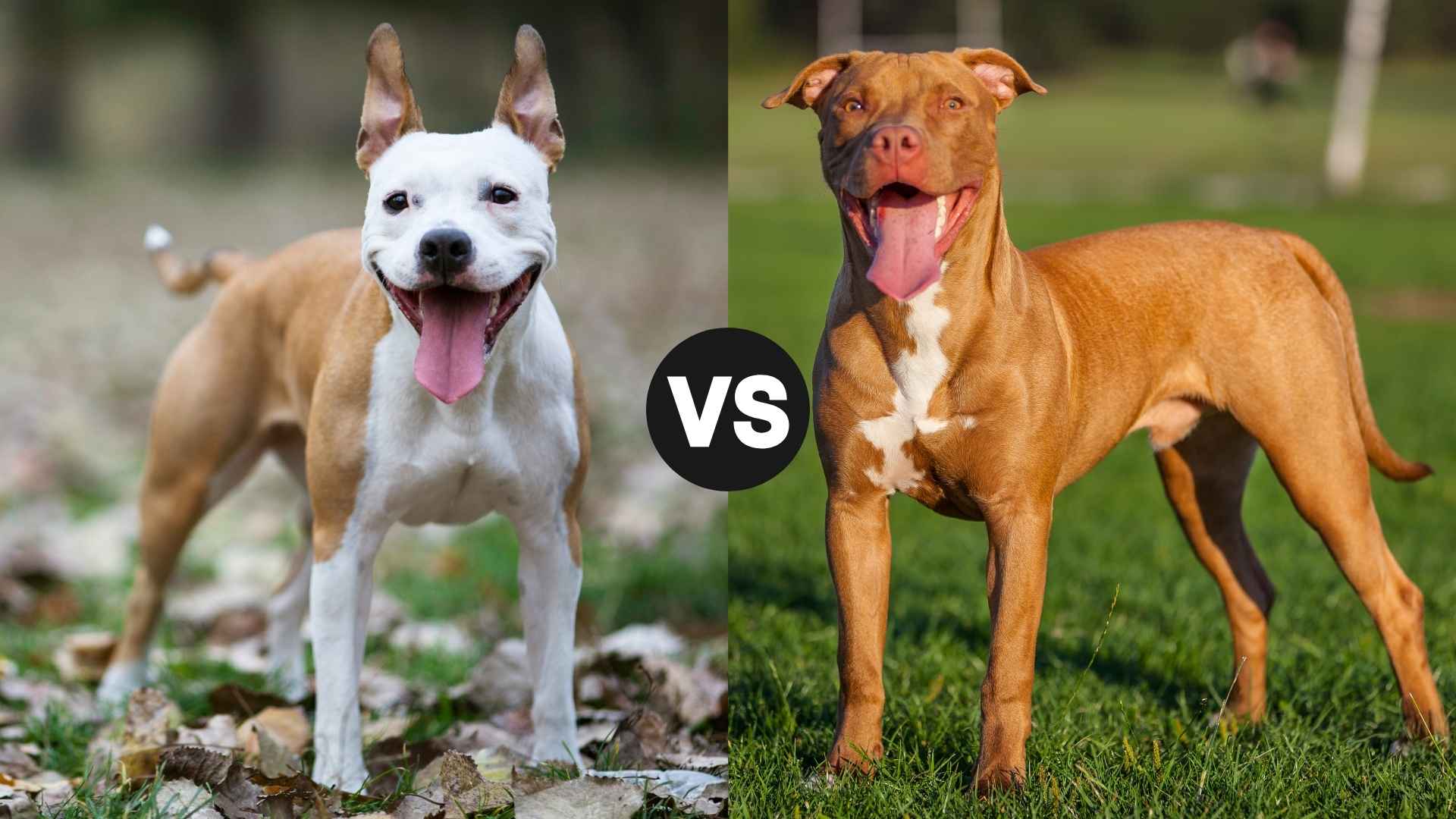When it comes to the terms American Staffordshire Terrier and PitBull, many people get confused, as these names are often used interchangeably. However, there are important distinctions between the two. The Staffordshire Bull Terrier is a recognized breed by the American Kennel Club (AKC) with a clear breed standard.
On the other hand, “Pit Bull” is not a distinct breed; instead, it’s more of a general label that includes several bully breeds, such as the American Staffordshire Terrier, American Pit Bull Terrier, American Bully, and others, and belongs to the terrier breed group.
Despite their similar appearance, these breeds have unique traits and temperaments. Unfortunately, both Staffies and Pit Bulls often face unfair stereotypes as aggressive dogs, but in truth, they are loyal, intelligent, energetic, and wonderful companions.
If you’re considering adopting either of these two dog breeds or simply want to learn more, this comparison will explore their physical differences, personalities, health, and training needs. Let’s dive into the world of the American Staffordshire Terrier vs Pit Bull!
American Staffordshire Terrier vs. PitBull
The American Staffordshire Terrier, or AmStaff, is a recognized breed by the American Kennel Club, known for its muscular build, affectionate temperament, and compact size. Their origins trace back to 18th-century England, where they were once used in bull baiting and blood sports.
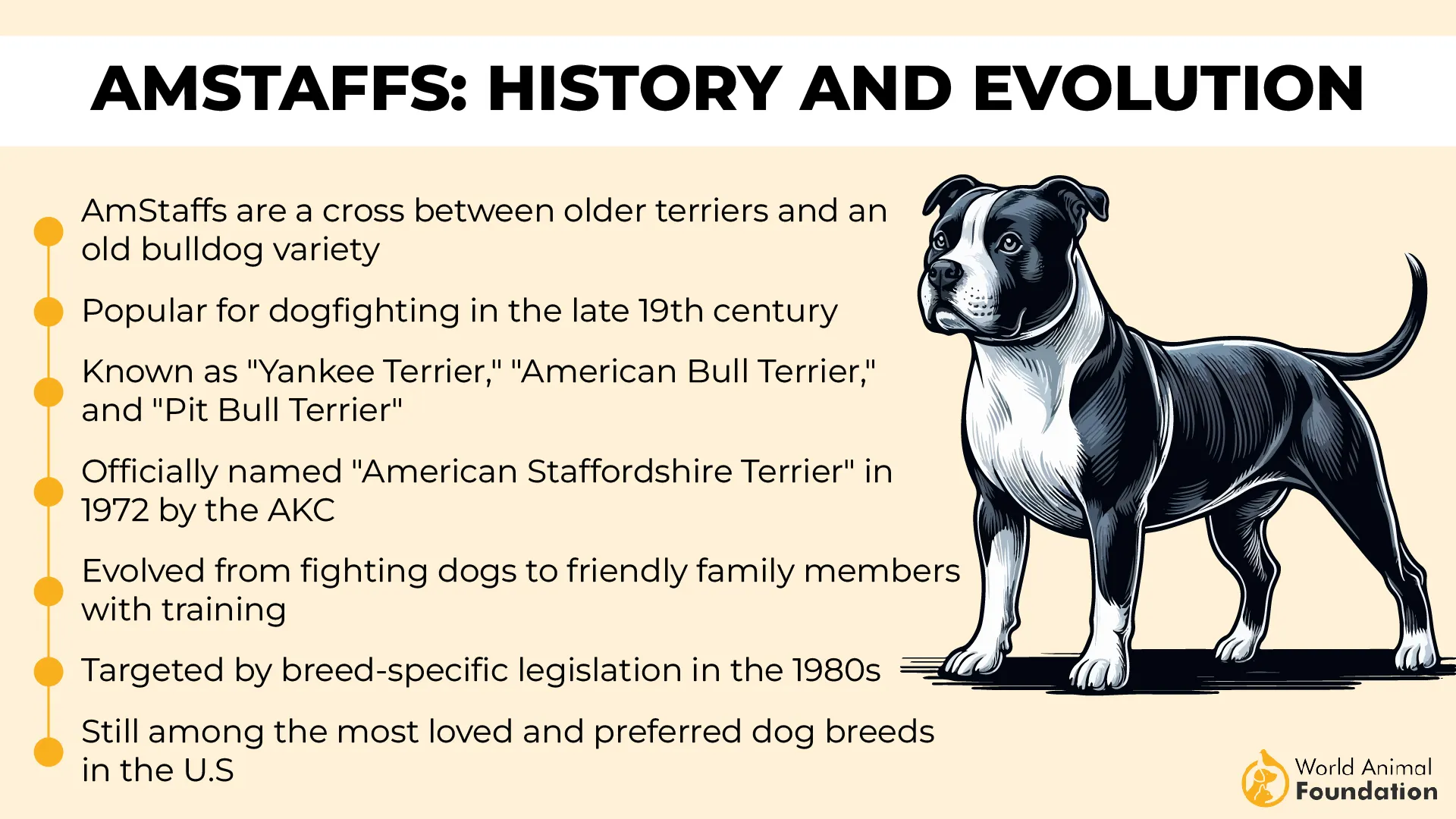
Today’s AmStaffs are cherished family companions. They come in a variety of colors, including brindle, blue, black, and white, and are celebrated for their intelligence, strength, and loving nature.
In contrast, the Pit Bull isn’t a specific breed but rather a general term used to describe several breeds with similar ancestry and appearance, such as the American Pit Bull Terrier, Staffordshire Bull Terrier, American Bulldog, and even the American Staffordshire Terrier, states Britannica.

The UKC and ADBA recognize the American Pit Bull Terrier, but not the AKC. Though originally bred for hunting and restraint of semi-feral livestock, modern Pit Bull-type dogs are valued for their loyalty, athleticism, and deep bonds with humans. Understanding these distinctions is key to appreciating the unique qualities of each breed.
Size and Weight Overview
When comparing American Staffordshire Terrier vs pitbull, both breeds share similar physical characteristics. The American Staffordshire Terrier is a sturdy, compact breed known for its muscular frame and strong presence. Despite standing only around 18 inches tall, these dogs are impressively powerful, with weights ranging from 40 to 60 pounds on average.
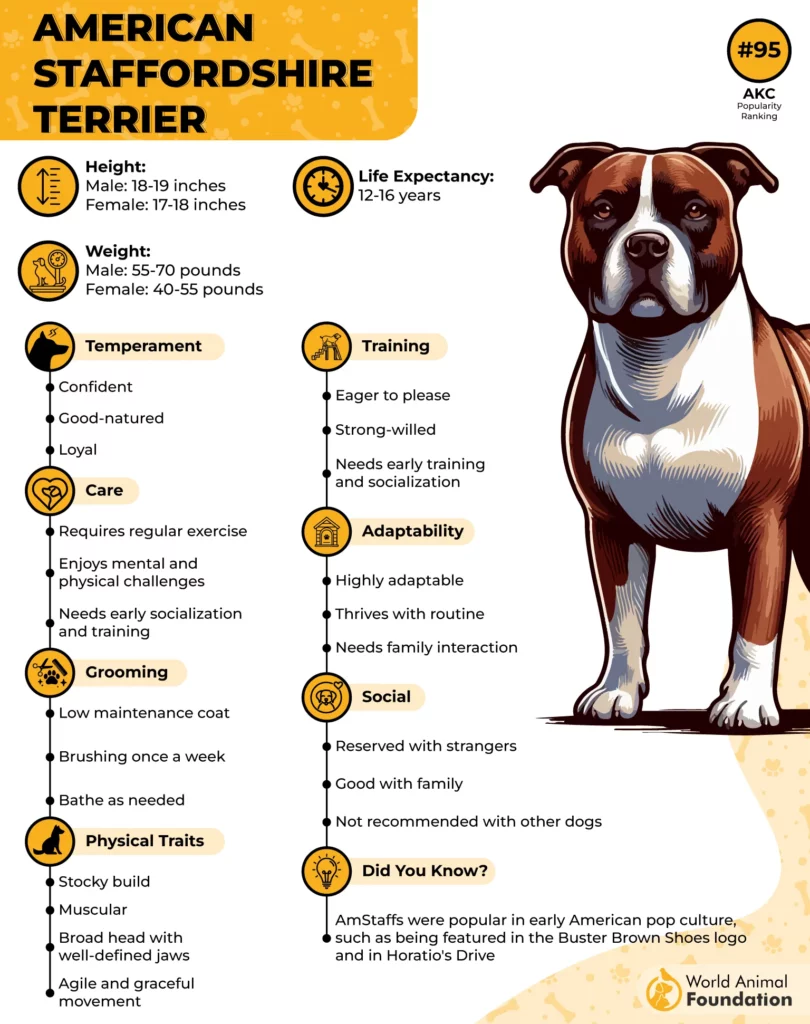
Some males may even reach up to 70 pounds, while females typically fall on the lighter end of the spectrum. Their broad chests and powerful, stocky build give them a commanding yet balanced appearance.
In comparison, Pit Bulls—specifically the American Pitbull Terrier, which the term often refers to—are slightly more varied in size. Males generally weigh between 35 to 70 pounds and stand 18 to 21 inches tall.
Females tend to be smaller, weighing around 30 to 60 pounds and standing 17 to 20 inches. Like AmStaffs, Pit Bulls are muscular with short, smooth coats that come in a variety of colors, including black, blue, brindle, and fawn.
Dietary Needs and Weight Management
American Staffordshire Terriers need a consistent feeding schedule to support their active, muscular build. Puppies require three meals daily, shifting to two meals by adulthood. Commercial food guidelines are a good start, but home-cooked diets may need veterinary guidance for proper nutrition.
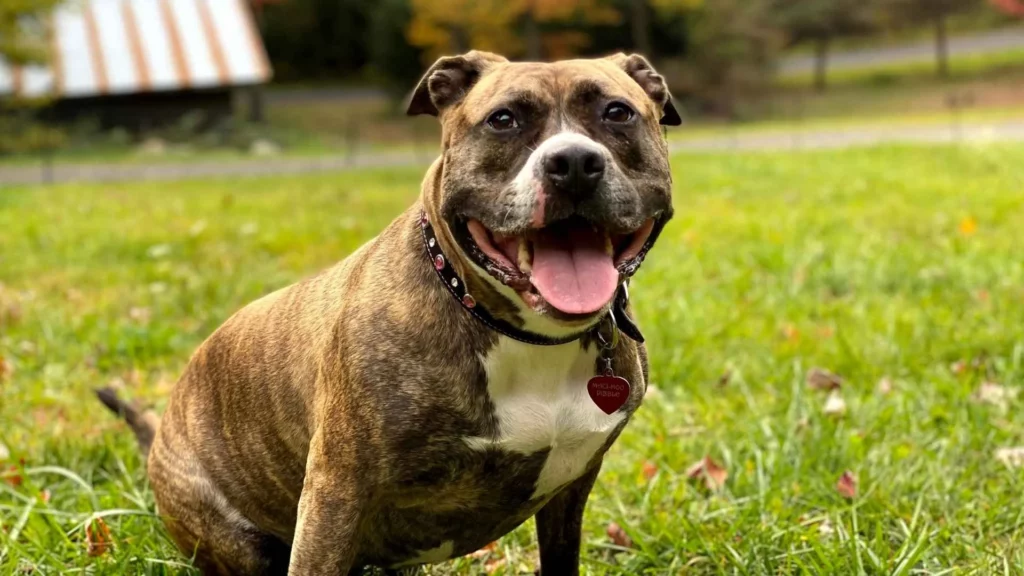
Joint supplements like glucosamine and chondroitin, plus omega-3s for skin and coat health, are beneficial. Exercise should be avoided right after meals to prevent gastric issues.
Pit Bulls also need a balanced diet based on age and activity, with commercial feeding guides as a baseline. Owners should monitor body condition to maintain a lean, muscular physique and adjust food as needed.
Supplements such as glucosamine, omega-3s, vitamin E, and probiotics support joint, skin, and immune health, but shouldn’t replace a complete diet. Regular vet visits help keep their nutrition on track throughout life.
Personality and Temperament Traits
American Staffordshire Terriers are affectionate, loyal dogs with high-energy levels that necessitate regular exercise and quality time with their families. They are naturally wary of strangers and may need consistent early socialization to develop well-rounded social skills. While generally patient and loving with children, supervision is important during interactions, states WebMD.
AmStaffs can get along with other pets if properly introduced, though their strong prey drive may make coexisting with smaller animals challenging. These dogs are alert and occasionally vocal, but their calm indoor behavior makes them adaptable to apartment living. With the right environment and proper training, AmStaffs become devoted, well-mannered companions.
Pit Bulls are often seen as affectionate, playful, and intelligent companions that enjoy physical games and respond well to obedience training. They tend to be quiet indoors, are not excessive barkers, and can serve as fair watchdogs.
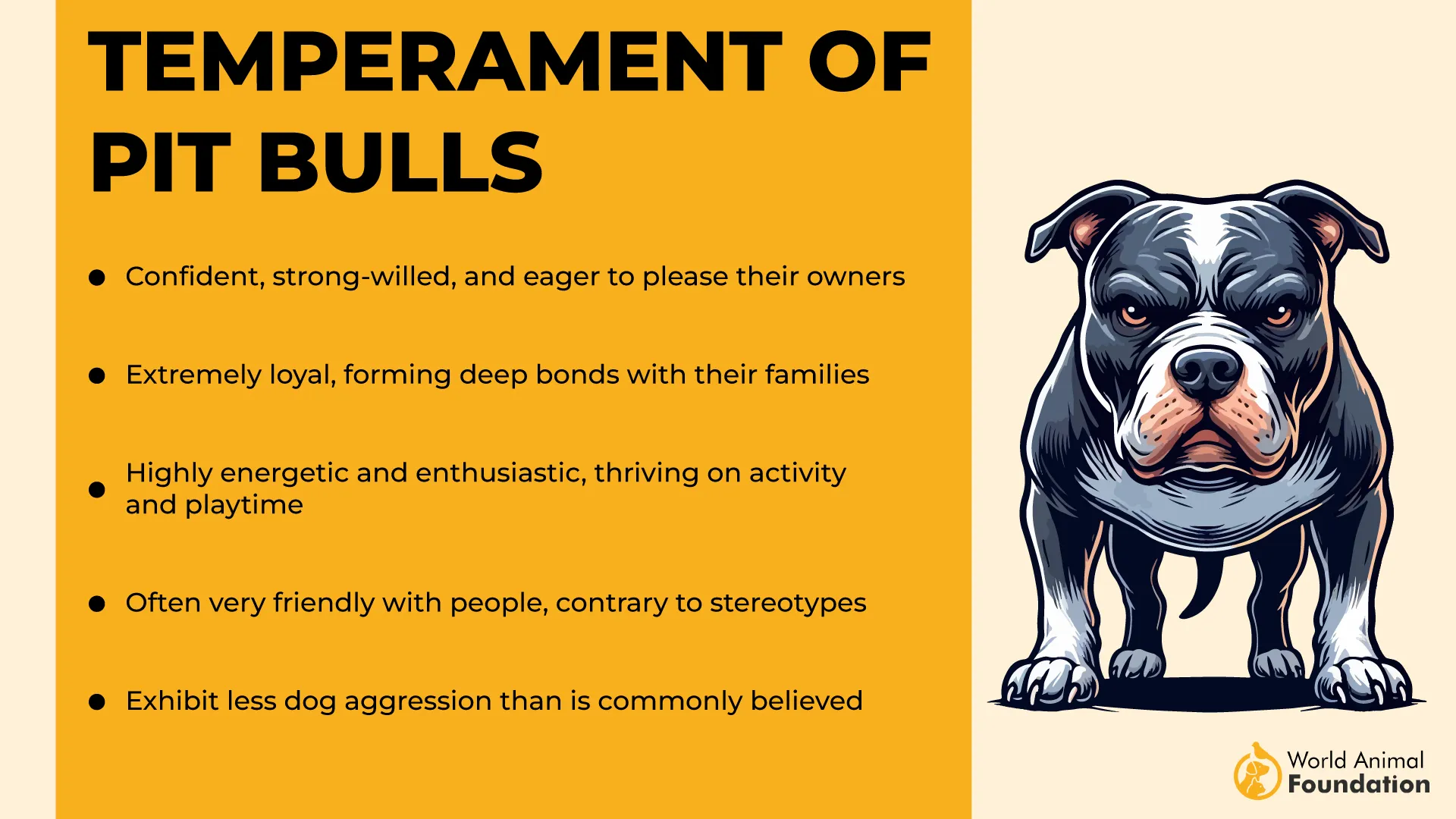
However, their controversial and somewhat unfair reputation stems from their history as tenacious fighting dogs, which may lead to aggressive behaviour, especially toward other dogs, if not properly socialized.
While they are not necessarily more likely to bite than other breeds, their powerful build and strong jaws can make attacks, though rare, more severe. Advocates argue that a Pit Bull’s temperament largely depends on upbringing, training, and environment.
Energy Levels and Exercise Requirements
American Staffordshire Terriers are highly energetic, athletic dogs that need at least an hour of vigorous exercise each day. Simply letting them roam in the yard won’t cut it—these people-oriented pups thrive on interactive play and quality time with their humans. Activities like daily walks, fetch, agility courses, and obedience training help meet their physical and mental needs.
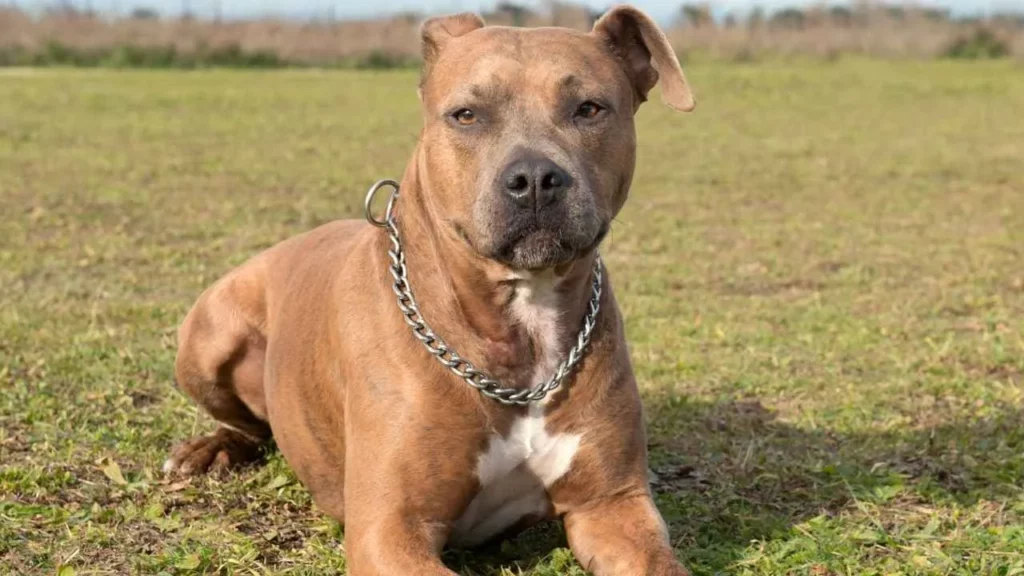
Many AmStaffs also enjoy dog sports such as dock diving or even search-and-rescue work, where their intelligence and determination shine. Without regular stimulation, they can become bored or anxious, which may lead to destructive behaviors.
Pit Bulls are equally energetic and courageous and require daily physical and mental engagement to stay healthy and happy. While they enjoy games and structured dog sports like scent work, flyball, and weight pulling, they are not ideal candidates for off-leash dog parks, especially as they mature.
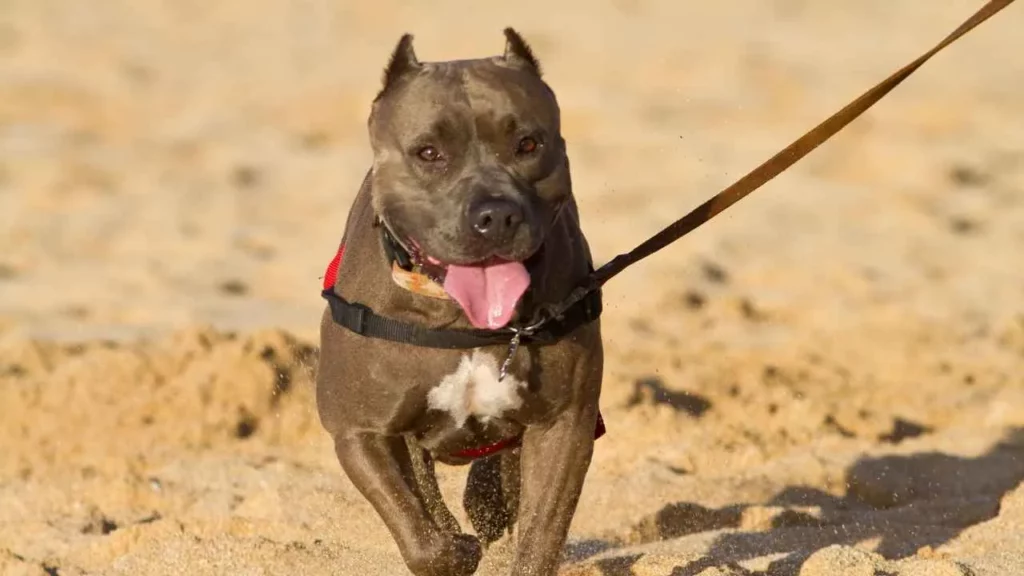
Even well-socialized Pit Bulls can become reactive if challenged. A secure, escape-proof yard is essential, along with daily leash walks using a no-pull harness. These strong, athletic dogs thrive when their minds and bodies are equally challenged.
Health Considerations and Lifespan
American Staffordshire Terriers are generally healthy, with a life expectancy of 12 to 16 years. However, may develop hereditary issues like hip and elbow dysplasia, often requiring long-term care or surgery. They’re also prone to progressive retinal atrophy (PRA), leading to gradual blindness, and cerebellar ataxia, a neurological disorder that affects coordination, according to PetMD.
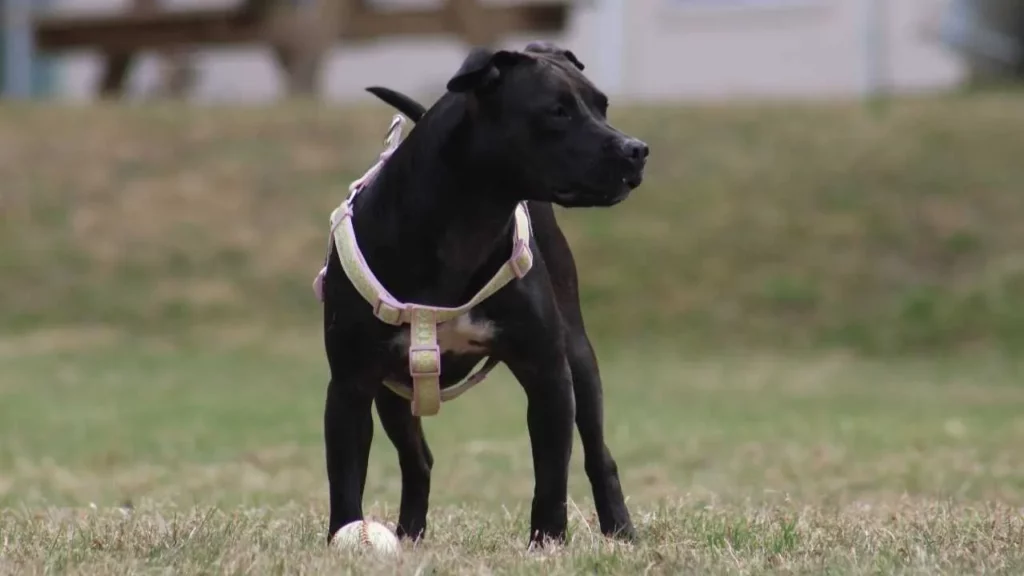
Other concerns include hypothyroidism, which causes weight gain and coat thinning but is manageable with medication, and skin allergies, often requiring a hypoallergenic diet and ongoing care.
Pit Bulls are typically healthy but can face issues like allergies, hip dysplasia, cataracts, and obesity. Allergies—triggered by food or the environment—can lead to skin irritation and require dietary changes or medications.
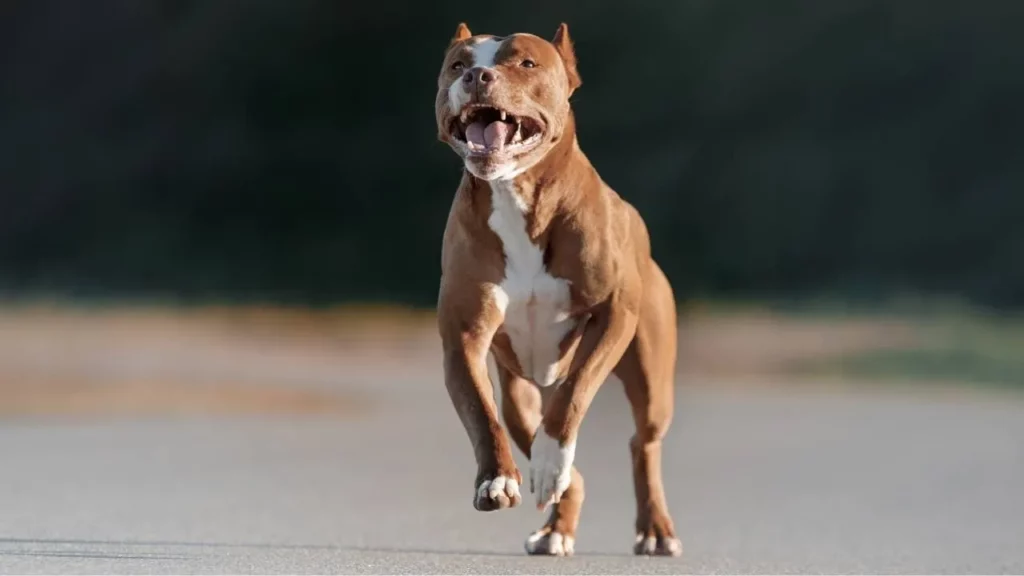
Hip dysplasia may cause joint pain and reduced mobility, often requiring lifelong management or surgery. Cataracts can impair vision but are treatable with surgery, while obesity can lead to further health complications, making proper diet, exercise, and regular vet checkups essential.
Grooming Requirements and Allergy Sensitivities
American Staffordshire Terriers and Pit Bulls are low-maintenance breeds with short coats that make grooming fairly easy. A weekly brushing with a soft bristle or rubber grooming tool helps control shedding, remove dirt, and distribute natural oils for a healthy coat. Baths are only needed occasionally, and regular nail trims are important to prevent discomfort during activity, states the AKC.
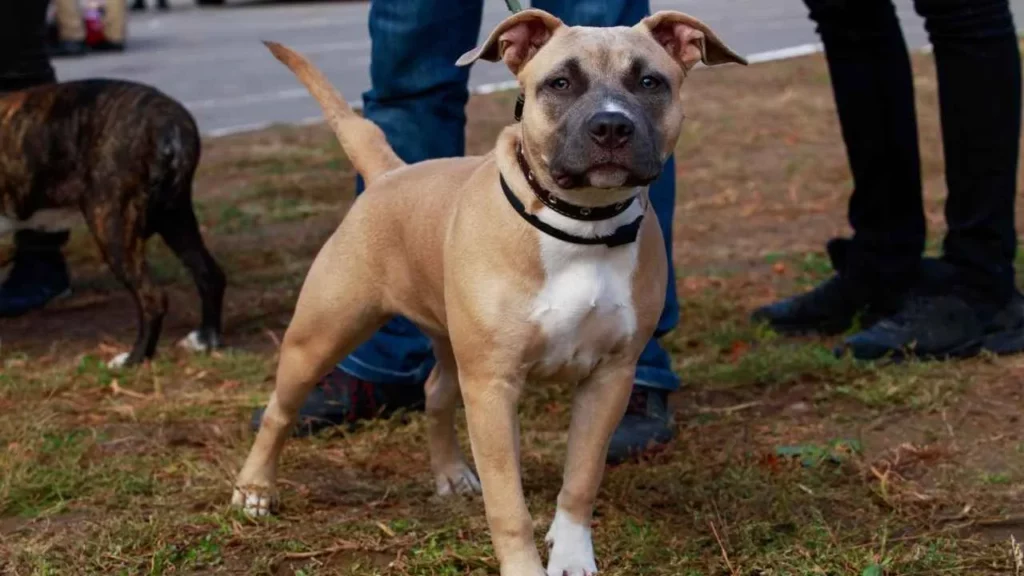
Despite easy grooming needs, both breeds can suffer from skin and food allergies, leading to itching, hot spots, or infections. Common signs include excessive licking or scratching, especially around the ears, paws, and belly. A balanced diet and regular brushing can help manage symptoms and keep their skin and coat in good condition.
Conclusion
In summary, while the American Staffordshire Terrier and the Pit Bull share a common ancestry and are often considered the same breed, they are recognized as separate breeds with a few key differences in size, temperament, and purpose.
Both have physical traits like broad heads and muscular builds, but more importantly, their behavior depends heavily on individual temperament and responsible ownership.
Though once linked to dog fighting and labeled as dangerous breeds, these dogs can be loyal, friendly companions when raised with proper care. Choosing a reputable breeder, socialization from a young age, and training are crucial, especially around other animals.
Despite outdated perceptions, AmStaffs and Pit Bulls can be well-mannered, affectionate pets, proving that good behavior comes from responsible breeders and committed owners, not breed stereotypes.


